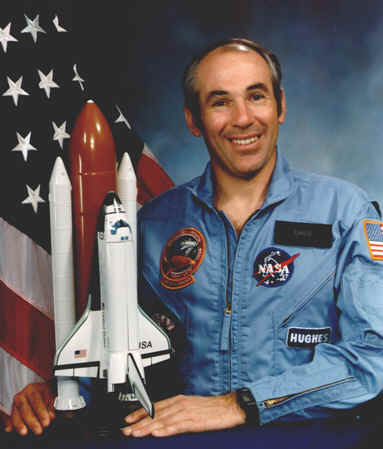Gregory Jarvis (Gregory Bruce Jarvis)

While pursuing his master’s degree at Northeastern, Gregory Jarvis worked at Raytheon in Bedford, Massachusetts, where he was involved in circuit design on the SAM-D missile. In July 1969, he entered active duty in the U.S. Air Force and was assigned to the Space Division in El Segundo, California. As a Communications Payload Engineer, in the Satellite Communications Program Office, he worked on advanced tactical communications satellites. He was involved in the concept formulation, source selection, and early design phase of the FLTSATCOM communications payload. After being honorably discharged from the Air Force in 1973, with the rank of Captain, he joined the Hughes Aircraft Company’s Space and Communications group, where he worked as a Communications Subsystem Engineer on the MARISAT Program. In 1975, Gregory Jarvis became the MARISAT F-3 Spacecraft Test and Integration Manager. In 1976, the MARISAT F-3 was placed in geosynchronous orbit. Jarvis became a member of the Systems Applications Laboratory in 1976, and was involved in the concept definition for advanced UHF and SHF communications for the strategic forces. Joining the Advanced Program Laboratory in 1978, he began working on the concept formulation and subsequent proposal for the SYNCON IV/LEASAT Program. In 1979, Jarvis became the Power/Thermal/Harness Subsystem Engineer on the LEASAT Program. In 1981, he became the Spacecraft Bus System Engineering and in 1982, the Assistant Spacecraft System Engineering Manager. He was the Test and Integration Manager for the F-1, F-2, and F-3 spacecraft and the cradle in 1983, where he worked until the shipment of the F-1 spacecraft and cradle to Cape Kennedy for integration into the Space Shuttle. Both the F-1 and F-2 LEASAT spacecraft successfully achieved their geosynchronous positions. Jarvis was working on advanced satellite designs in the Systems Application Laboratory when he was selected as a payload specialist candidate in July 1984.
Gregory Jarvis was Payload Specialist 2 on STS-51-L which was launched from the Kennedy Space Center, Florida, at 11:38:00 EST on January 28, 1986. The crew on board the Orbiter Challenger included Commander, Dick Scobee, pilot Michael J. Smith (USN), mission specialists Dr. Ronald McNair, Lt. Col. Ellison Onizuka (USAF), Dr. Judith Resnik, and fellow civilian payload specialist, Christa McAuliffe. The entire STS-51-L crew died on January 28, 1986, when Challenger exploded during launch. The remains of all seven astronauts from the Challenger disaster were discovered in the crew decks on the ocean floor. Jarvis’ body was discovered in the lower mid-deck along with Ronald McNair and Christa McAuliffe. During salvage operations to raise the crew deck from the ocean floor, it escaped from the wreckage, floated to the surface, and disappeared back into the sea. On April 15, 1986, on the last scheduled attempt to recover wreckage, it was rediscovered and returned to shore.
Born
- August, 24, 1944
- USA
- Detroit, Michigan
Died
- January, 28, 1986
- USA
- Cape Canaveral, Florida
Cemetery
- International Forest of Friendship Memorial
- Atchison, Kansas
- USA



